Pathway To Digestive Health:
What To Avoid To Maintain A Healthy Gut
When we talk about eating healthy, we usually picture salads packed with vegetables or a perfectly grilled slab of salmon. We assume that sticking to suggestions on the dietary food pyramid will keep our digestive system –– and overall health –– in top shape.
The truth is, some "health" foods aren't actually that good for you. Some may even hurt your digestive system more than help.
You May Be Ruining Your Gut Health
Many of us think that we know what healthy food is, but we are commonly mislead by the food industry. For example, a Nielsen survey recently revealed that nearly 59% of consumers have a hard time understanding nutrition labels, which opens doors to manufacturers slapping misleading terms like “fat free” or “all natural” on their products to deceive us.1
Don’t let these labels fool you – a great deal of “healthy” food on the market is filled with processed sugar, artificial coloring, and a host of other potentially harmful additives. These ingredients can wreak havoc on our digestive health, causing indigestion, irritable bowel, bloating, and general discomfort. If you continue consuming these additives long-term, problems may spread throughout your body, affecting your heart, liver, kidneys, and brain.
Thankfully, all hope is not lost. While reading the label is important, it is even more critical to know how to read it. With that in mind, we’ve compiled a list of the most common mistakes consumers make when reading food labels.
Are You Making These Food Label Mistakes?
 We get it –– food labels can sometimes be confusing, especially when they list strange ingredients and acronyms. It’s no wonder that many of us misread the labels and incorrectly assume that we’re buying something healthy.
We get it –– food labels can sometimes be confusing, especially when they list strange ingredients and acronyms. It’s no wonder that many of us misread the labels and incorrectly assume that we’re buying something healthy.
If you’re hoping to improve your label-reading game, check these common mistakes below to make sure you’re not making them.
Mistake #1: Assuming “Reduced” is always a good thing
“Reduced” only means that the product contains 25 percent less of the unwanted ingredient than the original version, but it can still be present in large quantities. When you see "Reduced Fat" on potato chip packages, for example, you may still be getting much more of that fat than recommended. Sometimes, these ingredients shouldn’t be reduced in the first place, because a lot of the nutritional value is present in the fat. For example, low-fat milk contains less fat-soluble vitamins (D, K, A) but almost the same number of calories per serving, with added carbs making up for the difference.
Mistake #2: Forgetting to check the correct number of servings
Many products that appear to be only one portion –– like a bar of chocolate or a small bag of pretzels –– may actually be two or more. The only way to know that you’re not eating more than one serving is to check the number of portions on the nutrition label. If you do eat the whole package, you need to multiply the number of listed calories, carbs, and sugars with the number of servings.
Mistake #3: Trusting sales-oriented words like “Free” and “Zero”
According to Shape.com, “Labeling laws allow foods with less than .5 grams (500 milligrams) of trans fat per serving to be labeled trans fat free, or say zero grams.” Unfortunately, the only way to be sure you’re avoiding trans fat completely is to check the ingredient list for the words “partially hydrogenated,” which means the food in question does contain it.2 Five-hundred milligrams is the size of most common supplement capsules, so think of taking a supplement of artery-clogging trans fat with every serving of a “zero grams trans fat” product.
Eating healthy can be daunting. With so many trending diets these days, it can be difficult to distinguish between the good and the bad. Just remember that not all healthy food is created equally. Some claim to be a smart alternative to an unhealthy substance, but take these assertions with a grain of salt (pun intended).
8 "Health" Foods That Are Actually Unhealthy
Most of us already know that processed sugars and fried food aren’t great for our health, but you may be surprised to learn that many supposedly “healthy” products are just as bad. Don’t worry, though –– we’ll help you sort through the not-great and the downright unhealthy.3
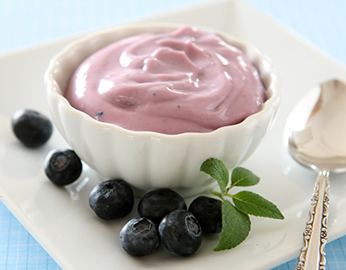 X
X1 Frozen Yogurt
This seemingly healthy snack can contain added sugar, especially those that include berry fillings. Despite the probiotic claims brands make, it doesn’t contain enough diverse strains to maintain your digestion by itself.
Verdict: Downright unhealthy
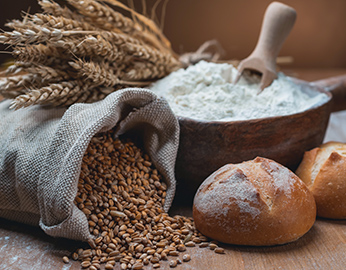 X
X2 Wheat
While whole wheat products are better than their overly processed counterparts, they still contain added sugar. Additionally, those that are advertised as multi-grain may not include as much wheat byproducts as promised.
Verdict: Not great
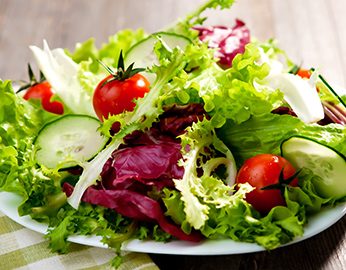 X
X3 Salads
Not all salads are created equal. Iceberg lettuce is high in water content, but lacks nutritional value. Worse, fast food salads contain the same calorie count as a burger.
Verdict: Not Great
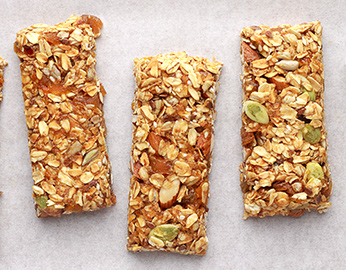 X
X4 Energy/Protein Bars
Most energy bars are disguised as healthy snacks, but they do more harm than good. One bar can contain over 350 calories. Worse, they contain artificial ingredients, sugar, and can possess up to 43 grams of carbohydrates.
Verdict: Downright unhealthy
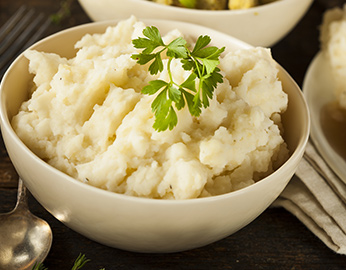 X
X5 Mashed Potatoes
In their natural state, potatoes contain tons of fiber and vitamins, but these nutrients are all contained in its peel, which is usually lost when mashed.
Verdict: Not Great
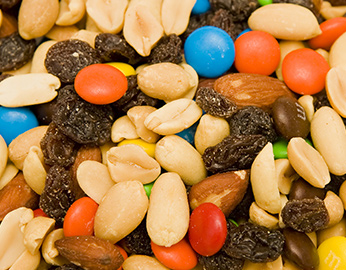 X
X6 Trail Mix
This common snack contains a high sodium and fat content, thanks to the salted nuts and added sugars in the M&M’s.
Verdict: Downright unhealthy
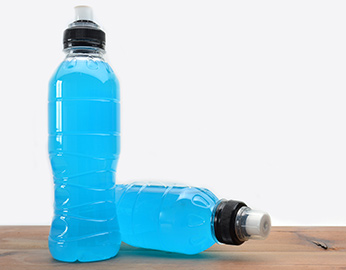 X
X7 Sports Drinks
While they’re advertised to replenish lost electrolytes, we recommend avoiding them unless you’ve just exercised. Otherwise, they can increase your sugar and sodium levels, which can alter insulin sensitivity.
Verdict: Downright unhealthy
 X
X8 Agave Nectar
Agave is a natural sweetener designed to be a healthy sugar alternative. However, this syrup contains high calories and 70-80% fructose, which is more than found in most corn syrups.
Verdict: Downright unhealthy
Many of us think that we’re going overboard by worrying about portion sizes or reading nutrition labels, and we try to adopt a “don’t-know, don’t-care” policy. While it may seem smart to avoid all the seemingly unnecessary anxiety, the real truth is that we’re eating for more than just ourselves, we’re eating to feed our microbiome. Our microbiomes are depending on us to be mindful about our eating habits and will suffer the consequences if we provide them with the wrong milieu of nutrients. They eat what we eat. And if they’re healthy, we’re healthy.
You Are What You Eat
What are microbiomes, anyway? Why do they matter?
First, here’s a fun statistic for you:
90% of the cells in your body aren’t actually yours.
They’re bacterial, and as you might guess, they play a huge role in your health.
These microbes make up gastrointestinal/bacterial communities known collectively as your digestive microbiome. Keeping your microbiome balanced with the right amount of both good and bad bacteria is essential to maintaining overall health.
Unfortunately, despite the digestive microbiome’s vital role in our overall health, it still remains one of the most overlooked areas of personal health. We hardly pay any attention to causes of digestive issues until it is too late. Our “go-to” plan of action tends to be focused on symptomatic relief rather than treating the cause.
Most of the time, however, we don't even realize our microbiomes are dangerously out of balance until more serious conditions arise. You may be harming your gut right now without even knowing it, and later on, diseases that affect far more than your digestive system can spread throughout your body.
Are Probiotics Right For You?
While eating fermented foods can help balance your microbiome to some degree, research shows that supplementing with a laboratory-grade probiotic is necessary if you want to see real results.5
Unfortunately, finding the right probiotic isn't easy. There are too many supplements on the market that are sub-par and fail to provide any meaningful benefits. Most probiotics don’t even contain what’s listed on their label. In fact, it’s taken me years to find a probiotic that I can confidently recommend.
That's why I was thrilled to find 1MD's Complete Probiotics Platinum. This laboratory-grade probiotic offers a groundbreaking 11 strains and guaranteed 50 billion live cultures. It also maintains its natural purity by incorporating vegan capsule shells that don’t contain common allergens like lactose, soy, gluten, or preservatives. Combined with its delayed release technology, 1MD is clearly miles ahead of the competition.
As a gastrointestinal doctor with years of experience, I’ve seen my fair share of patients come in with all kinds of digestive issues. After trying Complete Probiotics Platinum with these patients, I can confidently say that it really makes a difference and helps improve digestive function. That’s why, in my opinion, Complete Probiotics Platinum by 1MD is one of the safest, most comprehensive, and effective probiotics supplement on the market today.
-
http://www.nielsen.com/us/en/press-room/2012/fifty-nine-percent-of-consumers-around-the-world-indicate-diffic.html
-
http://www.shape.com/blogs/weight-loss-coach/5-nutrition-label-tricks-avoid
-
https://authoritynutrition.com/how-to-read-food-labels/
-
http://www.livestrong.com/article/473131-how-much-protein-powder-should-i-drink/
-
https://www.ncbi.nlm.nih.gov/pmc/articles/PMC3909163/
*These statements have not been evaluated by the Food and Drug Administration.





